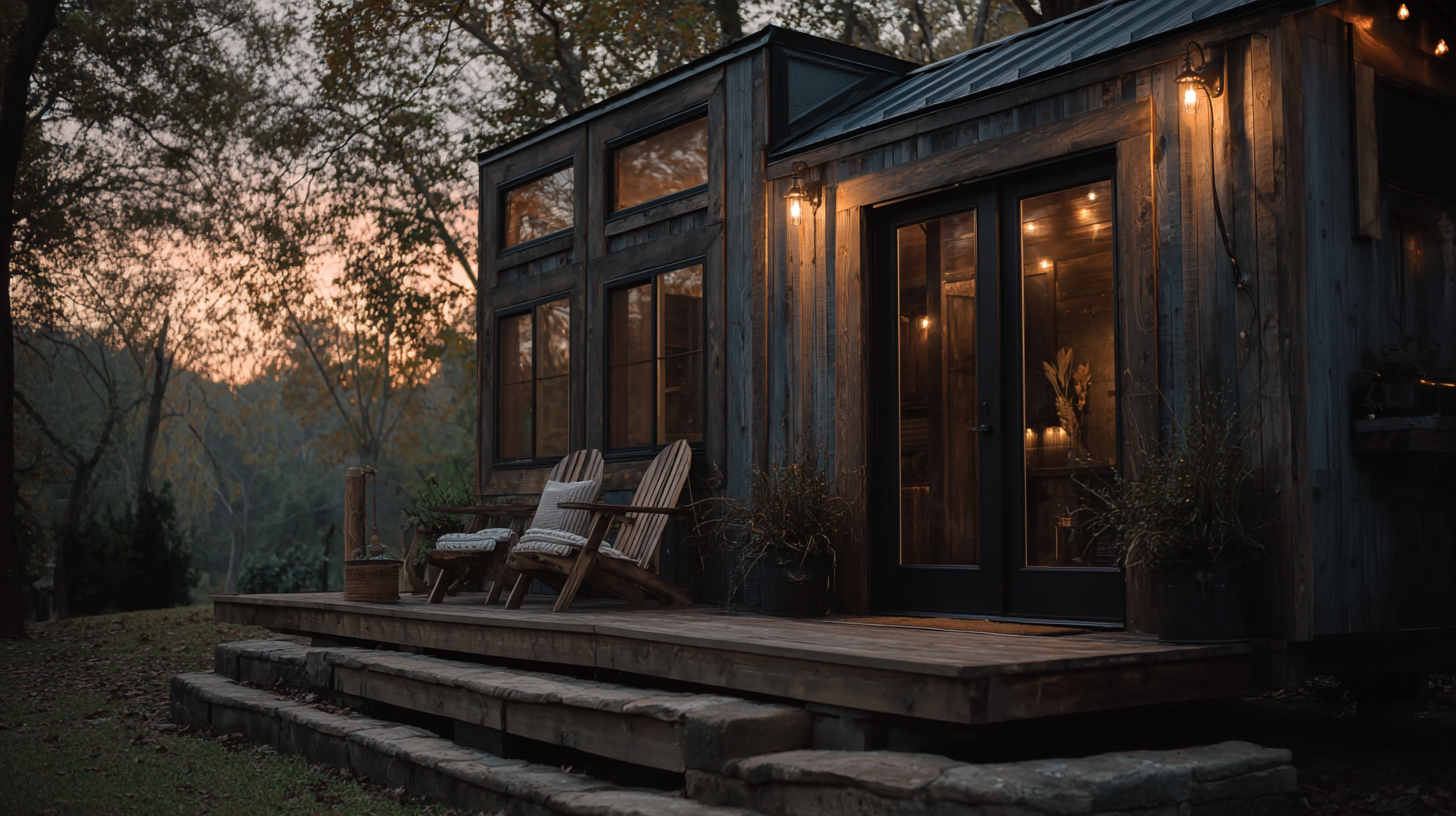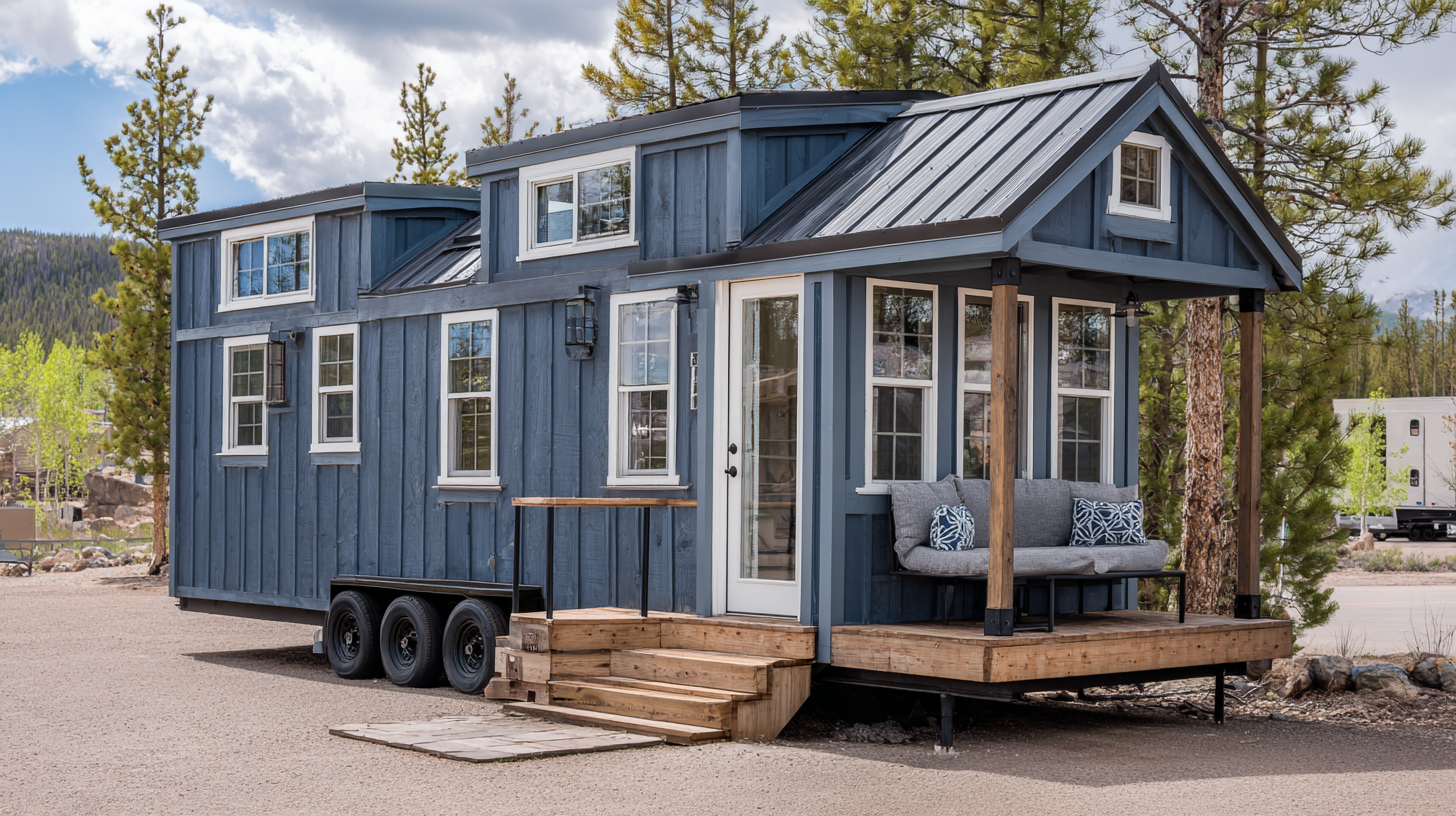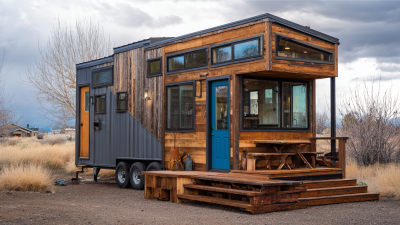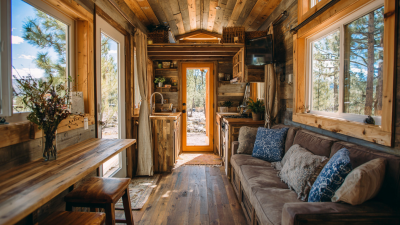Discover the Hidden Benefits of Living in Tiny Homes for Sustainable Lifestyles
In recent years, the concept of tiny homes has gained immense popularity as a viable solution for those seeking a sustainable lifestyle. These compact living spaces offer numerous hidden benefits that extend beyond simple minimalism. By embracing tiny homes, individuals can significantly reduce their ecological footprint, save on utility costs, and foster a deeper connection with their surroundings. Moreover, the movement encourages innovative design, maximizing functionality while promoting intentional living.

In this article, we will explore actionable tips and insights that illustrate how choosing a tiny home can lead to a more fulfilling and environmentally friendly lifestyle. Whether you're contemplating downsizing or simply curious about alternative living arrangements, uncover the advantages that come with making the shift to tiny homes.
The Rising Popularity of Tiny Homes in Sustainable Living Trends
The rising popularity of tiny homes reflects a significant shift in sustainable living trends and consumer priorities. As people increasingly recognize the environmental impact of conventional housing, many are turning to smaller, more efficient living spaces. These compact homes not only reduce energy consumption and resource use but also encourage a minimalist lifestyle that prioritizes quality over quantity. By downsizing, individuals find themselves embracing simplicity, leading to less clutter and more meaningful experiences in their daily lives.

Moreover, tiny homes serve as a practical solution to economic challenges, offering affordable housing options in urban areas where traditional homes may be out of reach. The construction and maintenance of tiny homes often require fewer resources and result in lower utility bills, making them a financially viable choice. As the movement gains traction, the tiny home community fosters innovation in sustainable design and building practices, promoting eco-friendly materials and energy-efficient technologies. This growing trend not only aligns with environmental consciousness but also inspires a sense of community among like-minded individuals who share values of sustainability and responsible living.
Understanding the Environmental Impact of Smaller Footprints
 Living in tiny homes offers a transformative approach to sustainability, significantly reducing our environmental impact. According to the American Tiny House Association, the average tiny home is about 400 square feet compared to the national average of 2,600 square feet for traditional homes. This drastic reduction in size leads to lower energy consumption—tiny homes require less heating and cooling, which can cut energy costs by approximately 60% (Energy Information Administration). Furthermore, the materials used in tiny homes are often eco-friendly, with many builders opting for sustainable and recycled resources.
Living in tiny homes offers a transformative approach to sustainability, significantly reducing our environmental impact. According to the American Tiny House Association, the average tiny home is about 400 square feet compared to the national average of 2,600 square feet for traditional homes. This drastic reduction in size leads to lower energy consumption—tiny homes require less heating and cooling, which can cut energy costs by approximately 60% (Energy Information Administration). Furthermore, the materials used in tiny homes are often eco-friendly, with many builders opting for sustainable and recycled resources.
Tips for those considering a tiny home lifestyle: Embrace Minimalism - Prioritize essential items to reduce clutter, which not only saves space but also your environmental footprint. Invest in Solar Energy - Installing solar panels can make your tiny home energy self-sufficient and reduce reliance on fossil fuels. By leveraging renewable energy sources, you can further decrease your ecological impact while living comfortably.
Ultimately, the shift towards tiny homes is not just about living smaller; it's about making conscious choices that benefit the environment. The simplicity of tiny living fosters a closer relationship with nature and encourages innovative solutions for sustainable living.
Financial Benefits of Downsizing: Cost Savings Statistics in Tiny Homes
Downsizing to tiny homes offers a remarkable array of financial benefits that make sustainable living an appealing choice for many. One of the most significant advantages is the substantial reduction in mortgage or rent payments. Tiny homes typically cost far less to build or purchase, allowing individuals to allocate a smaller portion of their income toward housing. For instance, the average cost of a tiny home can range from $20,000 to $60,000, compared to the median price of a traditional home, which often exceeds $300,000. This dramatic price difference translates to monthly savings that can be reinvested in other meaningful pursuits, such as travel, education, or retirement savings.
In addition to lower purchase prices, tiny homes also lead to decreased utility expenses. With their smaller footprint, these homes consume significantly less energy, resulting in lower electricity and water bills. Statistics reveal that tiny home dwellers can save an estimated 50% or more on monthly utilities compared to those living in larger residences. Furthermore, the reduced maintenance costs associated with tiny homes free up additional funds for owners. By embracing a simpler, minimalist lifestyle, individuals not only promote sustainability but also enjoy the financial freedom that comes from living within their means.
Maximizing Space Efficiency: Innovative Design Solutions in Tiny Living
Living in tiny homes offers numerous advantages, particularly when it comes to maximizing space efficiency. Recent architectural trends emphasize innovative design solutions that not only make the best use of limited square footage but also promote sustainable living. For example, a newly designed tiny home in Tokyo showcases strategic layout features on a mere 30 square meters, demonstrating how thoughtful planning can redefine urban living in space-constrained areas. By incorporating multi-functional furniture and vertical storage solutions, these homes facilitate a minimalist lifestyle that minimizes clutter and enhances overall comfort.
Moreover, with the rise of mobile tiny homes, such as the architect-designed option from Australia, homeowners can enjoy both mobility and sophistication. The clever loft-bedroom layout not only maximizes vertical space but also provides the added luxury of extra amenities, making the small living experience surprisingly accommodating. Data shows that tiny homes can significantly reduce energy consumption, leading to effective sustainable living solutions. With the right design strategies, individuals can transform their modest spaces into functional and stylish habitats, ready to meet the challenges of contemporary urban lifestyles.
Community and Lifestyle: Social Impacts of Tiny Home Living on Sustainability
Living in tiny homes not only supports sustainability through reduced consumption and minimized environmental impact, but it also fosters a strong sense of community. Residents of tiny home villages often share common spaces, skills, and resources, enabling deeper connections and collaborative lifestyles. This communal living approach can lead to a more resilient support network, where neighbors help each other, share sustainable practices, and contribute to a collective lifestyle that prioritizes environmental respect.
Tips for fostering community in tiny home living include organizing regular gatherings to discuss sustainability practices and share resources. Creating a common garden can enhance cooperation and provide fresh produce for all. Establish communication channels, such as a group chat or community board, to facilitate planning and encourage ongoing interaction among residents.
Furthermore, tiny home living allows individuals to simplify their lives and focus on what truly matters. This intentional lifestyle often leads to a shift in priorities, encouraging people to invest time in relationships and local initiatives. To maximize social impact, consider volunteering with local organizations or hosting workshops that educate others about sustainable living practices, thus multiplying the benefits of tiny home living throughout the broader community.



